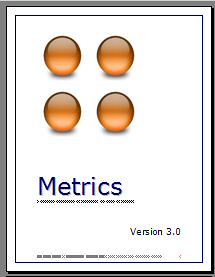Fierce winds knocked down a power line in Berkeley in the wee hours of Tuesday morning. Smokey the canine alarm clock insisted that I get out of bed at 7:00 am even though the lights weren't back on. I lit a candle and stood at my drawing board mapping a simpler explanation of what workflow learning is all about. I thought myself a modern-day Abraham Lincoln, studying by flickering candelight and forced to heat my coffee water on the gas grill on the deck. Falling off the grid was like slipping into a sensory-deprivation tank. No interruptions.
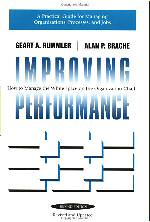
Before long I was flipping through Rummler and Brache's
Improving Performance: How to Manage the White Space on the Organization Chart. Intuition told me it was time to dig into this book. No, despite the fact that it has been out for a decade, I hadn't read it before. My copy is from the library at the Haas School of Business.
What a wonderful book! This is a powerful tome, way ahead of its time: deep truth. Few of the concepts are new to me but now I know where they came from. The book is concentrated -- every sentence counts. Yet it is also clear, even when hitting the heavy parts of organizational design.
Rummler and Brache (hereafter, R & B) apply a systems view to improving performance in business organizations. They contend that most managers don't understand their own businesses. The managers may know their products and their customers, but they don't know the processes where raw material is converted into products nor how those products are sold or distributed. In fact, they often manage the organization chart (a verticle slice) instead of the business (which is the value chain flowing horizontally).
R & B present a 3x3 matrix with Performance Needs (Goals, Design, and Management) along one axis and Levels of Performance (Organization, Process, and Performer) along the other. The bulk of the book explores each cell, e.g. Organization Design or Process Management.
I know this framework from piecing ideas together from other sources such as Deming, Forrester, Geis, Gilbert, Hammer, Keen, Kepner-Tregoe, Mager, Porter, Senge, Wiener, and, lately, Business Process Management. What I hadn't seen was R&B's wonderful synthesis.
Back to
workflow learning. People ask me about the difference between workflow learning and EPSS. A key aspect is that workflow learning connects more directly with R&B's process layer.
When we look beyond the functional boundries that make up the organization chart, we can see the work flow--how the work gets done. We contend that organizations produce their outputs through myriad cross-functional work processes, such as the new-product design process, the merchandising process, the production process, the sales process, the distribution process, and the billing process (to name a very few.) An organization is only as good as its processes.
The coming generation of IT, Web Services, enables organizations to connect performers directly to processes. The worker can monitor work at the process level as it happens. This used to involve huge delays, for example reading the report about how things looked last week. In the future, workers will get readouts of workflow status in near real time. This is revolutionary. The potential payoff is HUGE.
Study after study finds that among organizations that "manage the organization chart instead of the work," less than 20% of workers' and supervisors' time is spent adding value to work product. 80% of work time is wasted on waiting, inefficiencies, busywork, and window dressing.
R&B tell us, "The greatest opportunites for performance improvement often lie in the functional interfaces--those points at which the baton (for example, 'production specs') is being passed from one department to another...."
A primary contribution of a manager (at the second level or above) is to manage interfaces. The boxes already have managers; the senior manager adds value by managing the white space bwtween the boxes.
Workflow learning connects worker and dynamic value chain. I'm parsing earlier definitions of workflow learning into a core definition, principles of best practice, the organization as ecosystem, and the future IT environment. There's a pony in there somewhere. R&B have clarified my thinking.
I'll close with a couple of zingers from
Improving Performance:
Silo culture forces managers to resolve lower-level issues, taking their time away from higher-priority customer and competitor concerns. Individual contributors, who could be resolving these issues, take less responsibility for results and perceive themselves as mere implementers and information providers.
- - - - -
Evaluating training in a vacuum is a waste of time. A training program may have well-stated learning outcomes, appropriate media, excellent materials, and effective instruction. However, if the training addresses the wrong performance area, is not reinforced by Consequences and Feedback, is not supported by a well-designed work process, or is not linked to the direction of the organization, it is not worth the investment. With typical methods of evaluation, a workshop could win awards for instructional design the same week tha the company files for Chapter 11 protection. Performance impact evaluation, by contrast, does not allow a course to look good without its also having a significant impact on the performance of the business.
Amazon:
Improving PerformanceTo recap, here is the typical, functional way of getting things done:
The danger in this is that optimizing the parts (the functions) does not optimize the whole (the organization) because no one is responsible for the flow of value between functions. Hence, we should focus on optimizing the performance of a value chain that cuts across functions (and both starts and ends outside of the organization.)
I.e., go with the flow.
 Prepping for a conversation with Tom Stewart this morning, I spent a couple of hours going over my notes on Intellectual Capital and The Wealth of Knowledge. Both books are brilliant in describing the shift to the knowledge economy. These should be required reading for all executives. A few of the quotes I loved:
Prepping for a conversation with Tom Stewart this morning, I spent a couple of hours going over my notes on Intellectual Capital and The Wealth of Knowledge. Both books are brilliant in describing the shift to the knowledge economy. These should be required reading for all executives. A few of the quotes I loved:




 Foreign businesspeople new to China have an extraordinarily difficult time learning to sense and respond to the culture’s complexities. They don’t need more information—they need to be able to read what’s going on so they will know how to use the information they’ve got. Until now, no one could figure out how to transfer the insight of experienced foreign entrepreneurs.
Foreign businesspeople new to China have an extraordinarily difficult time learning to sense and respond to the culture’s complexities. They don’t need more information—they need to be able to read what’s going on so they will know how to use the information they’ve got. Until now, no one could figure out how to transfer the insight of experienced foreign entrepreneurs. What separates novices from experts is the way they size things up. Experts assess a situation with less information than novices. In his new book, “Blink,” Malcolm Gladwell calls this capability “thin-slicing” or “rapid cognition.” Designers started by teasing out the “thin slices” that experts pay attention to when making rapid decisions. They elicited narratives from China hands, focusing them on context rather than conclusions. The narratives fell into six themes: strategy, environment, people, culture, law and fraud.
What separates novices from experts is the way they size things up. Experts assess a situation with less information than novices. In his new book, “Blink,” Malcolm Gladwell calls this capability “thin-slicing” or “rapid cognition.” Designers started by teasing out the “thin slices” that experts pay attention to when making rapid decisions. They elicited narratives from China hands, focusing them on context rather than conclusions. The narratives fell into six themes: strategy, environment, people, culture, law and fraud. Next, the designers conducted extensive, confidential interviews with seasoned professionals. They asked them to imagine challenging but typical scenarios and to display them on a table using small figures and props to represent roles and relationships (situational context). The experts explained the relationships displayed (social context). They also played the scenarios forward and backward, answering questions such as “Let’s imagine it turns out well/badly—what would the situation look like then?” (teleological context).
Next, the designers conducted extensive, confidential interviews with seasoned professionals. They asked them to imagine challenging but typical scenarios and to display them on a table using small figures and props to represent roles and relationships (situational context). The experts explained the relationships displayed (social context). They also played the scenarios forward and backward, answering questions such as “Let’s imagine it turns out well/badly—what would the situation look like then?” (teleological context). The designers poured this content into six shell scenarios. They included representative businesses going into China (trading companies, manufacturing companies, service companies), the situational themes and a variety of geographic regions. Narrative techniques created by Dave Snowden’s Cynefin Centre helped transform the raw material into realistic stories. Methods borrowed from screenwriting brought the stories to life. The result was a “game pack” of scenarios, each containing dozens of unfolding vignettes.
The designers poured this content into six shell scenarios. They included representative businesses going into China (trading companies, manufacturing companies, service companies), the situational themes and a variety of geographic regions. Narrative techniques created by Dave Snowden’s Cynefin Centre helped transform the raw material into realistic stories. Methods borrowed from screenwriting brought the stories to life. The result was a “game pack” of scenarios, each containing dozens of unfolding vignettes. A half-dozen or more novices can work though the scenarios collaboratively, making individual judgments along the way and learning from what their colleagues deem important. One game takes a moderately experienced group three hours or more to complete, but the game is best played with diverse levels of experience. Forcing the group to agree on their reading of the situation before moving on requires them to explain their divergences, which in itself provides a high level of complex, highly contextualized knowledge.
A half-dozen or more novices can work though the scenarios collaboratively, making individual judgments along the way and learning from what their colleagues deem important. One game takes a moderately experienced group three hours or more to complete, but the game is best played with diverse levels of experience. Forcing the group to agree on their reading of the situation before moving on requires them to explain their divergences, which in itself provides a high level of complex, highly contextualized knowledge. These decision games, as pioneered by decisionmaking expert Gary Klein, repeatedly test a person¹s judgment and knowledge while allowing them to engage with business colleagues in a complex and ambiguous environment. While they are learning about a particular domain, participants also gain insight into the perspectives, styles and capabilities of their colleagues.
These decision games, as pioneered by decisionmaking expert Gary Klein, repeatedly test a person¹s judgment and knowledge while allowing them to engage with business colleagues in a complex and ambiguous environment. While they are learning about a particular domain, participants also gain insight into the perspectives, styles and capabilities of their colleagues. Organizations need more savvy, can-do experts to deal with an increasingly complex world. In fact, decision games are a preferred method of developing experts in the U.S. Marines. These high-impact methods also accelerate the decision-making capabilities of high-tech sales stars.
Organizations need more savvy, can-do experts to deal with an increasingly complex world. In fact, decision games are a preferred method of developing experts in the U.S. Marines. These high-impact methods also accelerate the decision-making capabilities of high-tech sales stars. I just bought a really hip suite of software for manipulating words, sounds, and images for just over $500, and the vendor sweetened the deal by throwing in a full-fledged computer to run it.
I just bought a really hip suite of software for manipulating words, sounds, and images for just over $500, and the vendor sweetened the deal by throwing in a full-fledged computer to run it.

 Everything flows.
Everything flows.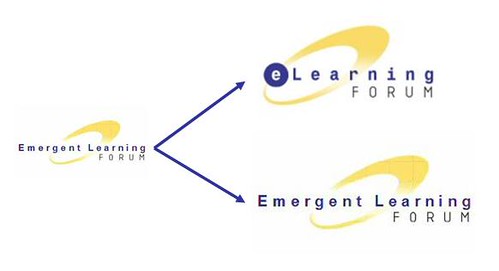
 Johnny Appleseed is an American folk hero who supposedly walked the frontier two hundred years ago, clearing the land and planting apple trees out of the goodness of his heart and an occasional commission. That's why apple trees cover the American landscape. I identify with Johnny.
Johnny Appleseed is an American folk hero who supposedly walked the frontier two hundred years ago, clearing the land and planting apple trees out of the goodness of his heart and an occasional commission. That's why apple trees cover the American landscape. I identify with Johnny. I never do just one thing at a time. (It's a sickness.) There's always a primary activity and other things tacked on. At this stage in life, I have convinced myself that I am living my beliefs and modeling my behavior for my peers and followers. One of the reasons I gave up Moveable Type for Blogger was that MT at the time was for geeks. If you didn't enjoy workarounds and add-ons and weird scripting code, you weren't going to fall in love with Moveable Type. Also, the folks at Blogger (under Google now) and Adaptive Path (great design!) made Blogger drop-dead simple to understand.
I never do just one thing at a time. (It's a sickness.) There's always a primary activity and other things tacked on. At this stage in life, I have convinced myself that I am living my beliefs and modeling my behavior for my peers and followers. One of the reasons I gave up Moveable Type for Blogger was that MT at the time was for geeks. If you didn't enjoy workarounds and add-ons and weird scripting code, you weren't going to fall in love with Moveable Type. Also, the folks at Blogger (under Google now) and Adaptive Path (great design!) made Blogger drop-dead simple to understand. Johnny Appleseed doesn't want to stick around to explain fertilizing, watering, pruning, or writing Perl scripts, so going to Blogger was a no-brainer. It's free, for heaven's sake. (The page you're reading now is hosted free on Blogger.) I've turned hundreds of people on to blogging, but the last thing I want to deal with is arcane coding issues.
Johnny Appleseed doesn't want to stick around to explain fertilizing, watering, pruning, or writing Perl scripts, so going to Blogger was a no-brainer. It's free, for heaven's sake. (The page you're reading now is hosted free on Blogger.) I've turned hundreds of people on to blogging, but the last thing I want to deal with is arcane coding issues. [If Flickr comes back from its "massage," I have some lovely
[If Flickr comes back from its "massage," I have some lovely  This is a windy introduction to the announcement that I'm going to retool the sites for Internet Time Group, Workflow Institute, Meta-Learning Lab, Emergent Learning Forum, and the Internet Time KnowledgeBase, and I'm going to try to streamline things using only simple, free tools. Apple seeds. If I make it, I'll be back to explain. In the meanwhile, if there's something you'd like to see here, a new feature perhaps, drop me a
This is a windy introduction to the announcement that I'm going to retool the sites for Internet Time Group, Workflow Institute, Meta-Learning Lab, Emergent Learning Forum, and the Internet Time KnowledgeBase, and I'm going to try to streamline things using only simple, free tools. Apple seeds. If I make it, I'll be back to explain. In the meanwhile, if there's something you'd like to see here, a new feature perhaps, drop me a 




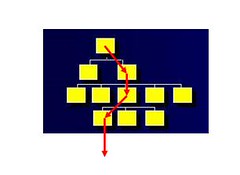
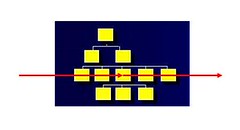






 Steve buys into complexity theory. Think about it.
Steve buys into complexity theory. Think about it. Raving Fans
Raving Fans




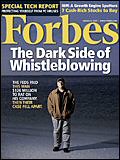 On Demand, In the Soup, and On the Path to Glory
On Demand, In the Soup, and On the Path to Glory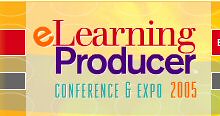
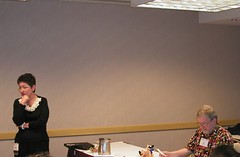
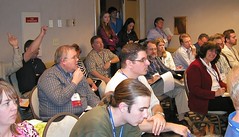



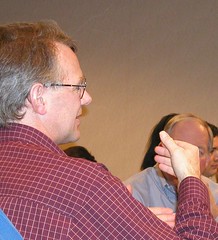
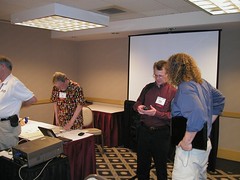
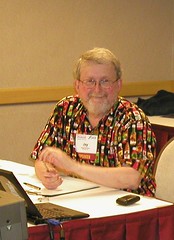 We debated whether the ability to Google endless factoids clogs the brain with trivia or permits time for developing reflection and critical thinking. We agreed that loose coupling will lead to flexible systems and, by extension, flexible organizations. We discussed whether learning itself needs to be redefined to include the augmentation fromm the net.
We debated whether the ability to Google endless factoids clogs the brain with trivia or permits time for developing reflection and critical thinking. We agreed that loose coupling will lead to flexible systems and, by extension, flexible organizations. We discussed whether learning itself needs to be redefined to include the augmentation fromm the net.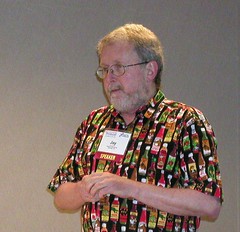 Not that this is new, but the future holds:
Not that this is new, but the future holds: